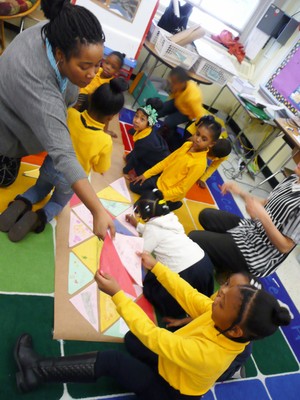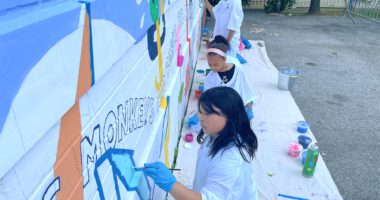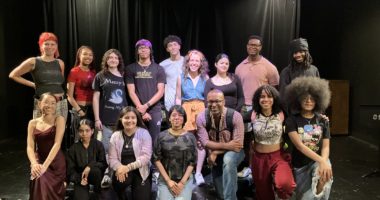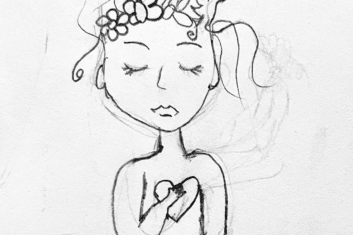The first week in April marked the end of a 15-week residency at PS 316 Elijah Stroud and our final class was as bittersweet as one might expect. In the weeks prior, we covered poetry and visual art from all corners of the globe — from traditional myths of the Dinka people of Sudan to North American jazz and blues, from Japanese haiku to mosaic forms and visual art. Though the gamut has indeed been run, I was reminded that who we are and what we carry into the classroom carries just as much importance as the lessons we plan.
The backstory: I tend to wear my hair in an afro, but up until a couple of weeks ago I wore my hair in individual braids. It’s been my experience that these sort of changes are noticed by people of all ages, but I didn’t think too much of what the students at either of my residencies might think. I remember a few initial stares but none of the first graders remarked upon my hair. Until a couple of weeks ago. When I returned to the classroom once again wearing my hair in its afro-ed state, one particularly curious student scooted next to me on the classroom rug and reached her hand into my hair. She lightly grasped a tendril and asked/stated, “You had braids last week.” I told her yes, that’s true and that I had taken them down over the weekend. My hair still in her hand, she asked, “So was that a weave?” I attempted to both tell her no and deflect the follow-up question I knew was coming and also to bring her attention back to the lesson. She would not be deterred. Before releasing my strands she said, “Your hair feels like mine.” I told her, “Yes, we have the same hair,” before guiding her attention back to the task at hand. The students were instructed to move from the rug to their desks and to begin a writing assignment. But before leaving the carpet, the same curious girl reached into her pocket and pulled out a bobby pin. I’d noticed she had a bantu knot that had come undone and she asked me if I could help fix her hair. I quickly pinned her knot back in place and sent her to her desk to create.

The entire exchange took only a couple of minutes and yet I’m still unpacking the deeper lessons. It was an exchange familiar to black women and girls and, as the only black adult in a classroom of nearly all black and brown students, I was reminded of how my presence could signal so much to the students. This certainly isn’t a critique, as the Teaching Artists I’ve been observing (Felipe Galindo and Phyllis Capello) have been nothing short of phenomenal and I continue to learn from their work. Truthfully, I love the diversity of stories and images they bring into the classroom. Nonetheless, this moment with this student was a reminder and a lesson. That representation matters.
-Jehan Roberson, TATIP 2016 Graduate, Writer
Interested in TATIP? Find out more about our 2016-17 Program!



